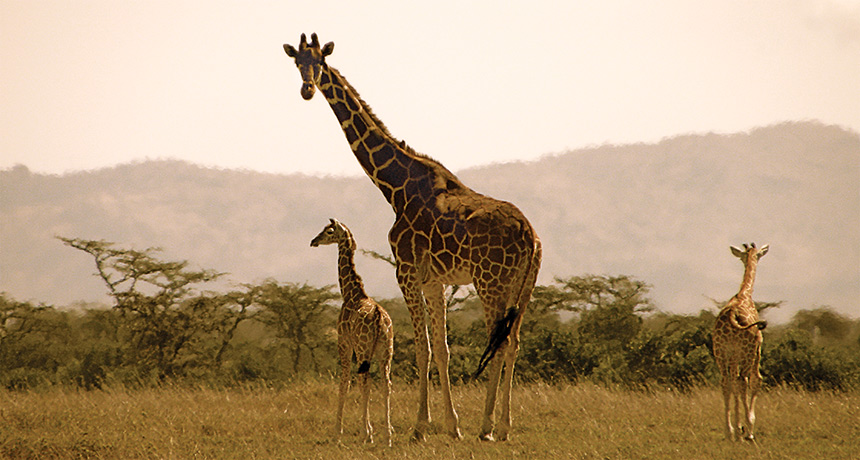

The climate consists of dry and cold winters and wet hot summers. The total reserve (42,647 ha) is split by a fence into two parts, with giraffes roaming freely in the largest part (34,500 ha). The study was carried out at Rooipoort Nature Reserve (RNR) (28☃6’59” S, 24☁5’28” E), South Africa ( Figure 1), located in the transition zone of the Karoo, Kalahari, and grassland. Nevertheless, the overall fGCM concentrations in animals of both groups were higher compared to the hormone metabolite concentrations in animals in the absence of human observers, suggesting that habituation reduced fGCM concentration in gorillas in the presence of humans, but this concentration remained elevated even after habituation. (2014) showed that Western lowland gorillas ( Gorilla gorilla) demonstrated lower fGCM concentrations after long-term habituation compared to animals for which habituation was still ongoing. (2008) showed that unhabituated white-faced capuchins ( Cebus imitator) had elevated fecal glucocorticoid metabolite (fGCM) concentrations in the presences of humans, but the concentration decreased with the duration of habituation. (1990) showed that rats became habituated to the repeated exposure to a particular stressor, to a degree at which habituation was negatively related to the stress stimulus intensity. The disruption of homeostasis in an animal due to environmental perturbation usually leads to an the of the hypothalamic–pituitary–adrenal (HPA) axis, resulting in an increase of glucocorticoid output. The habituation process can also cause changes to the physiological status of the animals, for example, changes in nervous system output including reflexes towards stimuli such as sweating and muscle contractions.

Using this method, Nowak and colleagues (2014) demonstrated that two groups of habituated samango monkeys foraged more often at lower levels with humans present compared to when humans were not present, suggesting that human observers possibly lowered their perceived risk of fear for terrestrial predators. A cheaper and non-invasive alternative could be the use of the GUD method. In addition, it can be a challenge to get approval and permits to mount such devices on animals, especially when endangered species are involved. Even though one can gather valuable information with GPS devices, such devices are associated with high costs. In contrast, radio-collared and habituated capuchin monkeys did not show a difference in movement patterns depending on observers’ presence, indicating species-specific variation in response to observers as well. (2001) showed that all radio-tracked activities of wolves ( Canis lupus) were correlated with human activity, however, there was individual difference in the strength of these correlations. More research is needed to understand the effect of anthropogenic influences in different scenarios (e.g., tourism, vehicles, hunting, etc.). Last, fGCM concentrations increased with human presence but decreased when individuals became habituated to human presence. The percentage of time spent observing a human observer did not decrease with the increase of habituation. The number of observers present significantly increased the percentage of time spent on observing an observer as well as the number of unhabituated individuals present in the herd. Giraffes walked significantly further distances in the presence of humans, but the cumulative time that observers were present decreased the hourly distance walked with an observer present, suggesting that the giraffes were becoming habituated. We also conducted behavioral observations to assess their vigilance and collected fecal samples to analyze their fecal glucocorticoid metabolite (fGCM) concentrations. We used GPS devices mounted onto giraffes to compare the distance walked in the presence or absence of human observers. The purpose of this study was to obtain insight into anthropogenic influences on giraffe’s behavior and adrenal activity. Limited information is available on how anthropogenic activities alter giraffe’s behavior, social structure, and related endocrine parameters. Studies on other species show alterations in movement patterns, vigilance, and stress-related hormone levels in the presence of humans. This has an impact on an animal’s behavior and its endocrine correlates. Giraffes are an important tourist attraction, and human presence to wildlife is increasing.


 0 kommentar(er)
0 kommentar(er)
